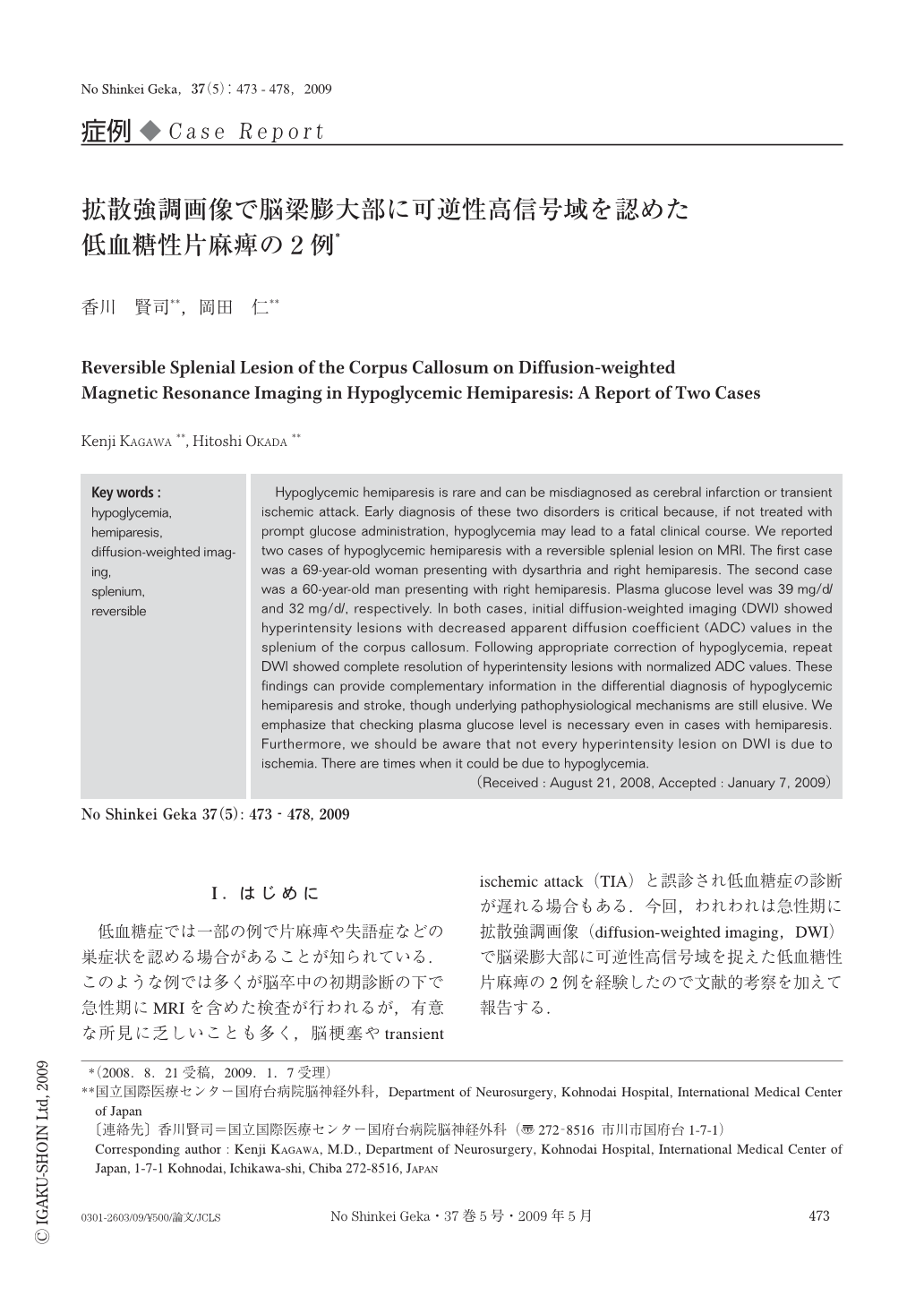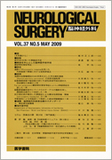Japanese
English
- 有料閲覧
- Abstract 文献概要
- 1ページ目 Look Inside
- 参考文献 Reference
Ⅰ.はじめに
低血糖症では一部の例で片麻痺や失語症などの巣症状を認める場合があることが知られている.このような例では多くが脳卒中の初期診断の下で急性期にMRIを含めた検査が行われるが,有意な所見に乏しいことも多く,脳梗塞やtransient ischemic attack(TIA)と誤診され低血糖症の診断が遅れる場合もある.今回,われわれは急性期に拡散強調画像(diffusion-weighted imaging,DWI)で脳梁膨大部に可逆性高信号域を捉えた低血糖性片麻痺の2例を経験したので文献的考察を加えて報告する.
Hypoglycemic hemiparesis is rare and can be misdiagnosed as cerebral infarction or transient ischemic attack. Early diagnosis of these two disorders is critical because, if not treated with prompt glucose administration, hypoglycemia may lead to a fatal clinical course. We reported two cases of hypoglycemic hemiparesis with a reversible splenial lesion on MRI. The first case was a 69-year-old woman presenting with dysarthria and right hemiparesis. The second case was a 60-year-old man presenting with right hemiparesis. Plasma glucose level was 39mg/dl and 32mg/dl, respectively. In both cases, initial diffusion-weighted imaging (DWI) showed hyperintensity lesions with decreased apparent diffusion coefficient (ADC) values in the splenium of the corpus callosum. Following appropriate correction of hypoglycemia, repeat DWI showed complete resolution of hyperintensity lesions with normalized ADC values. These findings can provide complementary information in the differential diagnosis of hypoglycemic hemiparesis and stroke, though underlying pathophysiological mechanisms are still elusive. We emphasize that checking plasma glucose level is necessary even in cases with hemiparesis. Furthermore, we should be aware that not every hyperintensity lesion on DWI is due to ischemia. There are times when it could be due to hypoglycemia.

Copyright © 2009, Igaku-Shoin Ltd. All rights reserved.


